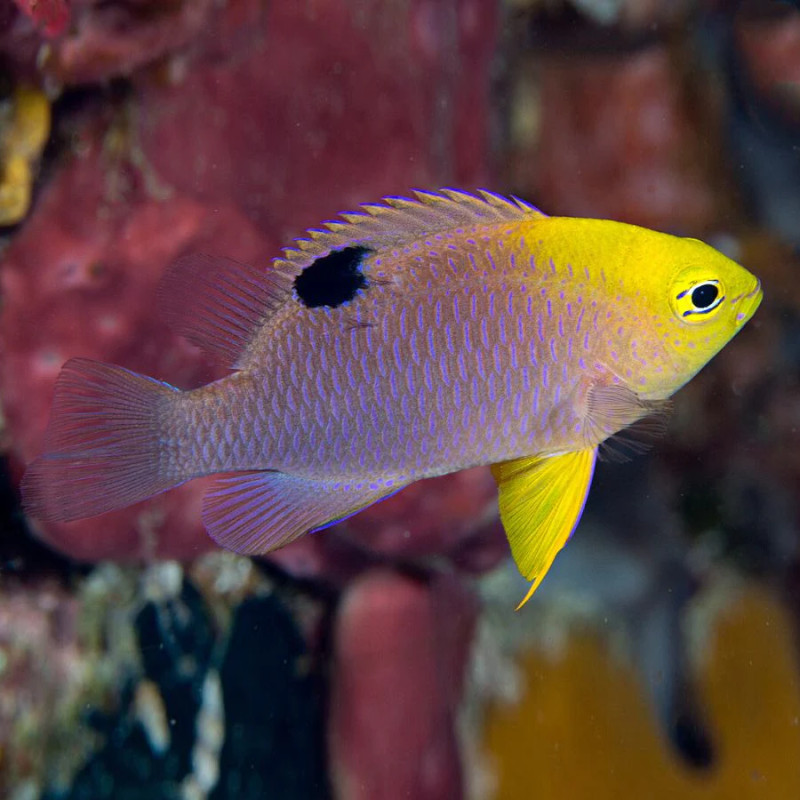More info
Common Name: Talbot’s Damselfish, Yellow-Violet Damselfish, Talbot’s Demoiselle
Scientific Name: Chrysiptera talboti
Order: Perciformes — Family: Pomacentridae (Damselfishes, Clownfishes)
Distribution: Indo-Pacific Ocean — From the Andaman Sea and Indonesia to the Philippines, Papua New Guinea, and the Solomon Islands. Found on coastal coral reefs and sheltered lagoons.
Lifespan: 6 to 8 years
Maximum Size (Adult): 6 to 8 cm
pH: 8.1 to 8.4 — Hardness: 8 to 12 dKH
Temperature: 24°C to 28°C
Minimum Aquarium Size: 100 liters
Reef Safe (Compatibility): Yes — Completely reef safe and harmless to invertebrates.
Behavior & Compatibility:
An active yet generally peaceful species, though it can become territorial with similar-looking fish or in small spaces. Ideal for reef and community aquariums, making it an excellent choice for beginner aquarists. It can be kept singly, in pairs, or in small groups, provided the aquarium offers enough hiding spots and swimming space.
Diet:
Omnivorous. In nature, it feeds on small planktonic crustaceans, zooplankton, and algae. In captivity, it readily accepts high-quality dry foods, flakes, pellets, and frozen options such as brine shrimp, mysis, and finely chopped krill. A varied diet enhances both coloration and overall health.
Reproduction:
Oviparous. The male selects and cleans a smooth surface where the female deposits her eggs. After spawning, the male guards and fans the eggs until hatching, which occurs after 3–4 days depending on temperature. Breeding in captivity is possible and similar to that of other damselfish species.
Sexual Dimorphism:
Subtle differences — adult males may show more intense coloration and territorial behavior during breeding periods, while females are slightly smaller and less vivid.
Natural Habitat & Biotope:
Inhabits shallow coral reefs and protected lagoons, typically at depths of 2 to 15 meters. It often stays close to branching corals and rocky zones, where it finds food and shelter from predators.
Etymology:
The genus name Chrysiptera comes from the Greek chrysos (gold) and pteron (fin or wing), referring to its golden fins. The species name talboti honors the ichthyologist George Talbot.
Ilustrative Photo.


